Introduction
EX-MÊKH, Ellen Rodenberg, Maarten Schepers and Kees Koomen, participated again inPlatforms Project 2022. It was the tenth edition of the artfair for non-commercial and independant artists initiatives and art platforms. Finally a normal fair after two years of improvisation on the internet and a somewhat improvised edition in the fall of 2021. We liked the video we made for the internet edition in 2021: for it we built a booth with the usual measurements in our studio and we filmed the proces of building an installation in the way we usually work. Platform Projects showed the video on the internet under the name Stage Arousal. Later it was shown in Paris on the front of EP7, a multidisciplinary building with 17 screens on the Avenue de France, near La Grande Bibliothèque.
The development of the project
For this edition of Platforms Project we decided to build another booth with a different context. Not a white cube, but but one with wooden floor and walls. Moreover, we built it in the open air in the woods and the back side stayed open too. As a result, it became a sculpture in itself. It made us think of a theatre. The fourth wall is the opening to the public, and the second wall gives a view on the back side, the context. We started to work there, improvising and experimenting. Eventually it resulted in the provisional video Scenes from a wormhole which we showed in the fair together with an installation which was made from material we used in the video.
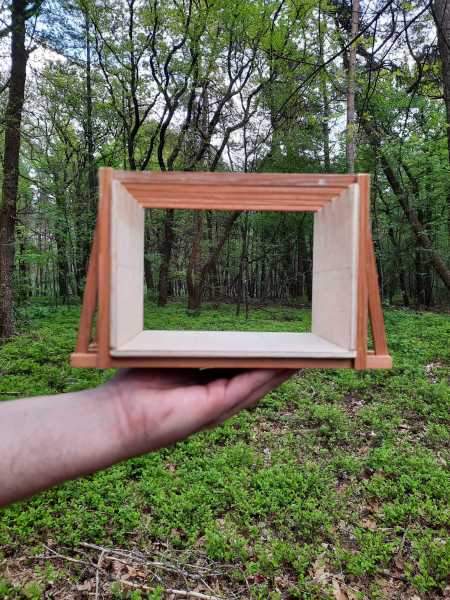


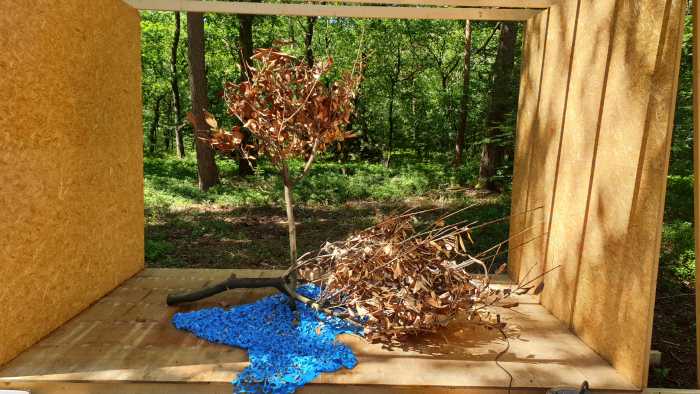
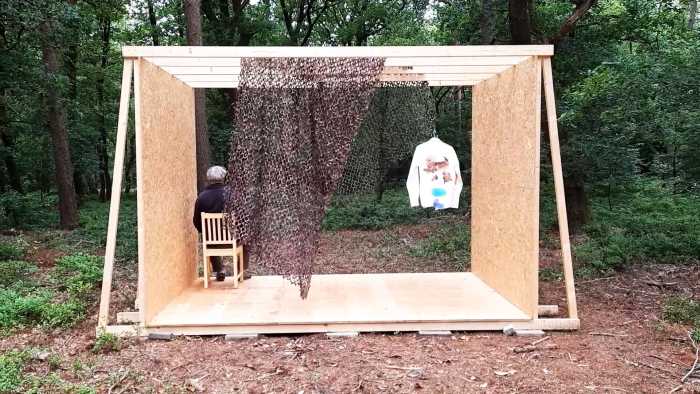

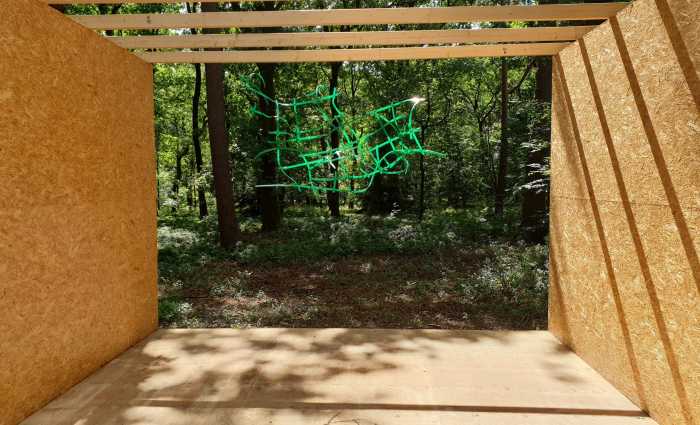
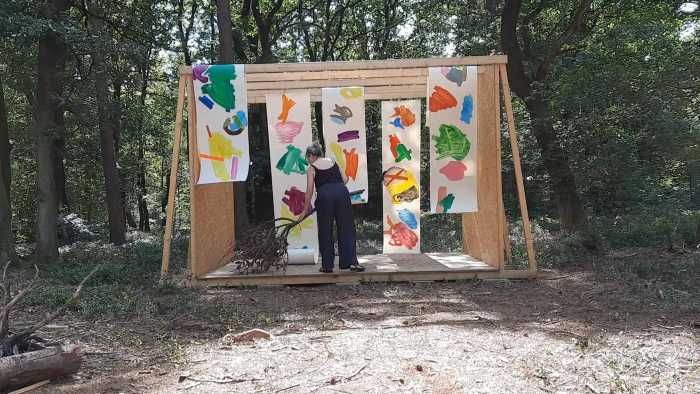

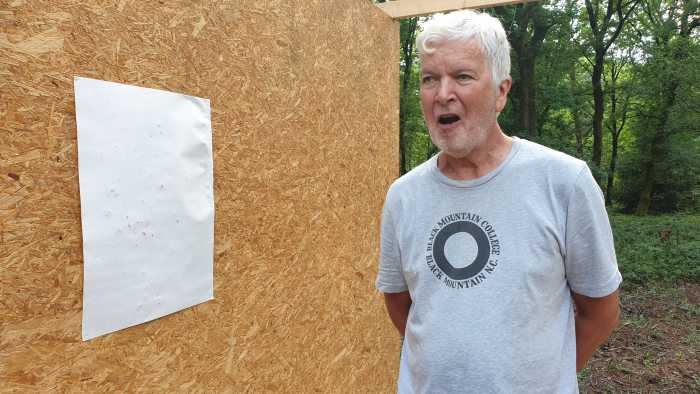
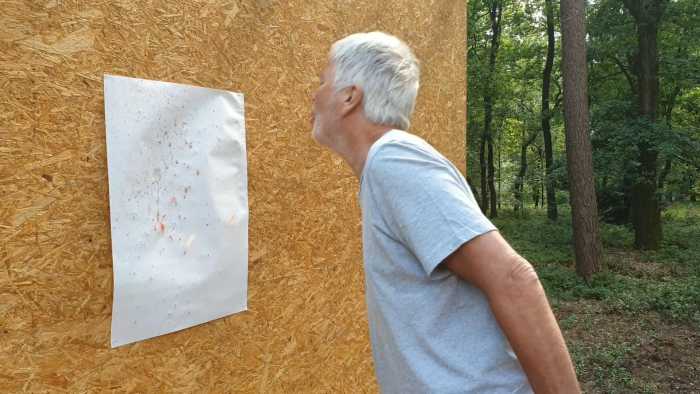


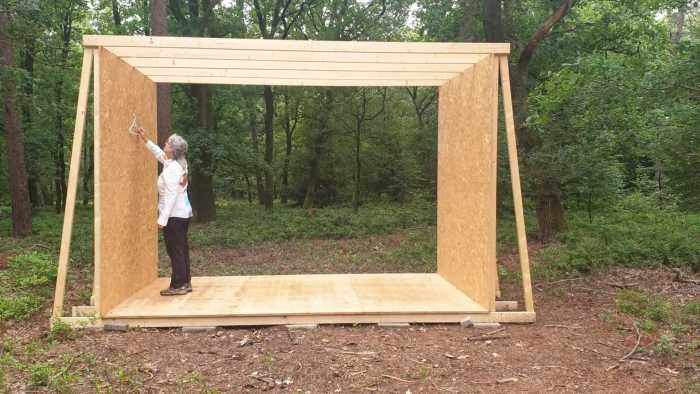
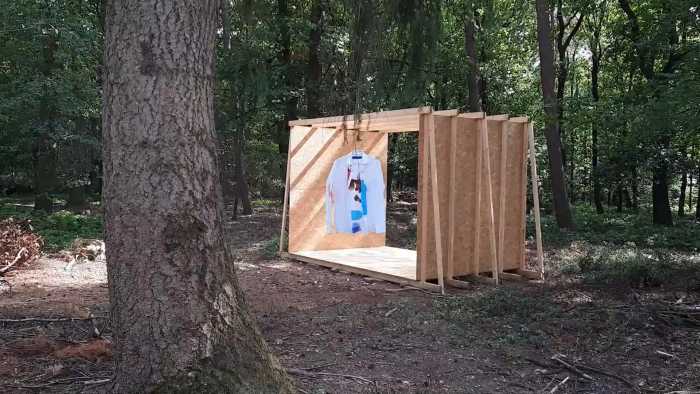
Execution of the project
In the pictures above you can see how we worked in the space which was constructed by Maarten Schepers. Each of us executed some performances and a number of interventions were realised. The video is still under construction, but we took these experiences and some of the materials with us to Athens. Using this we created a new installation which you can see underneath. The name of the installation was Wormhole, because of the different timelayers that we brought together in the work of the participating artists.
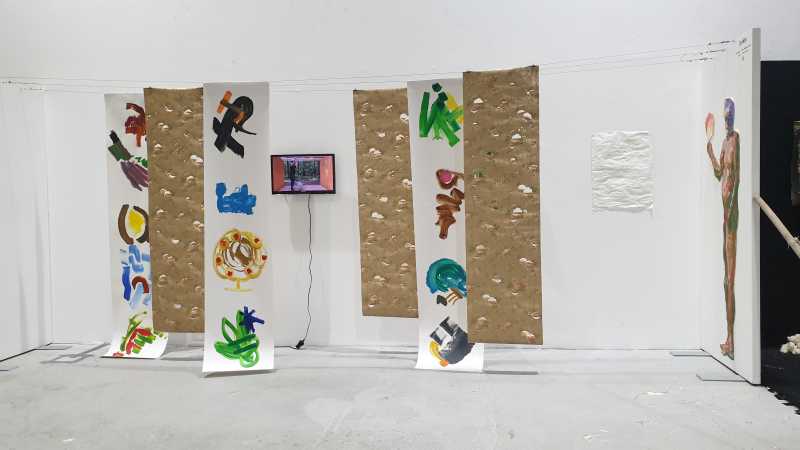
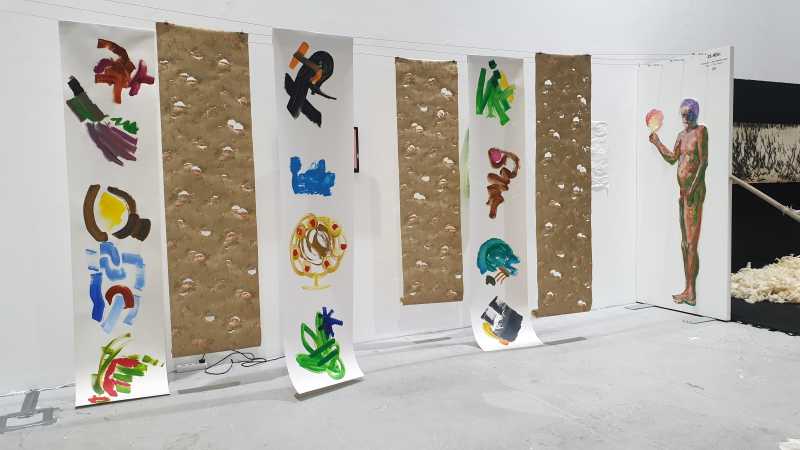
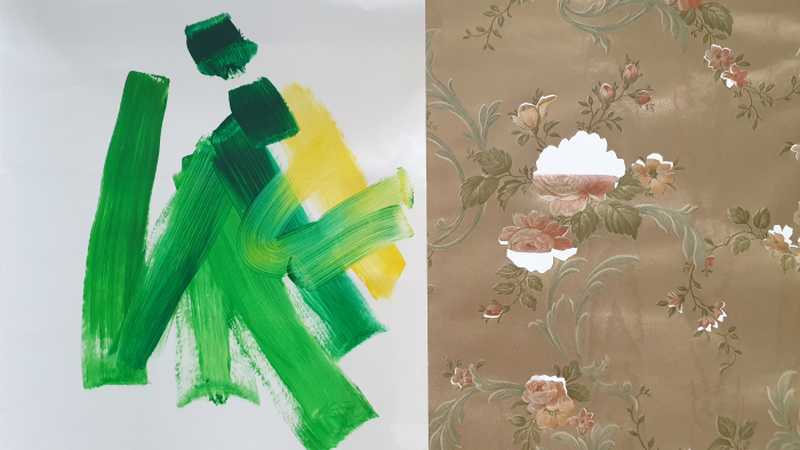
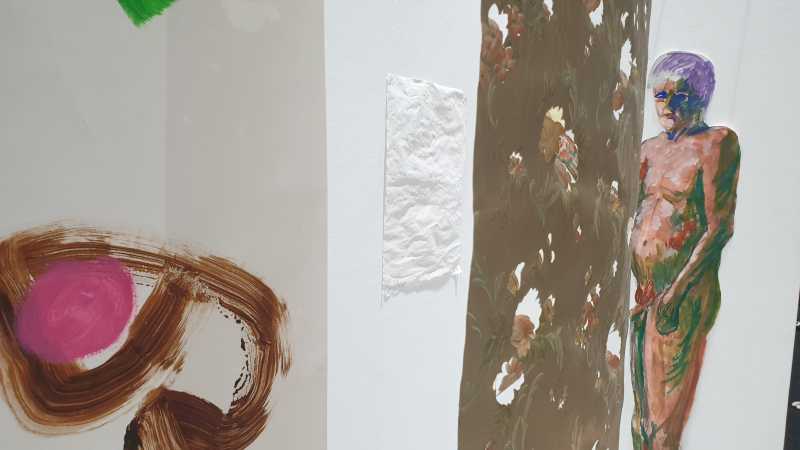
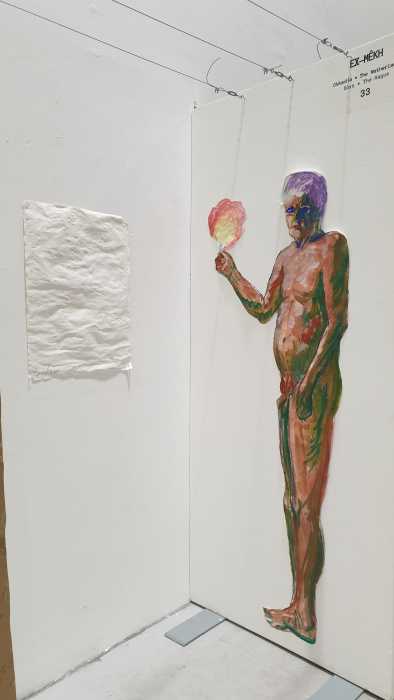
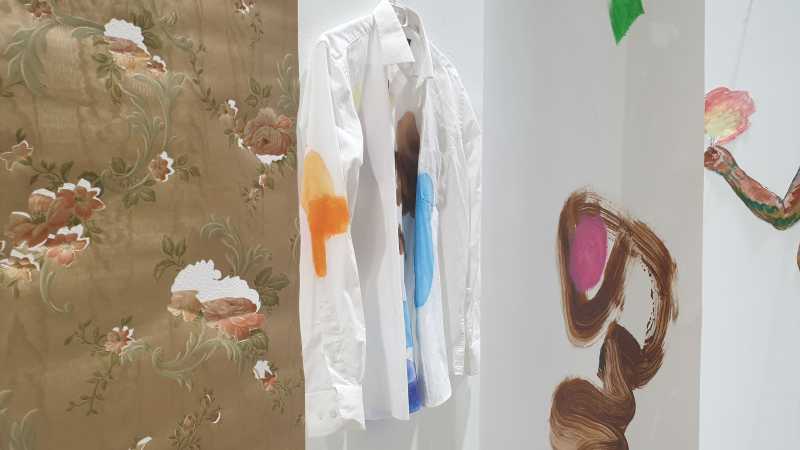
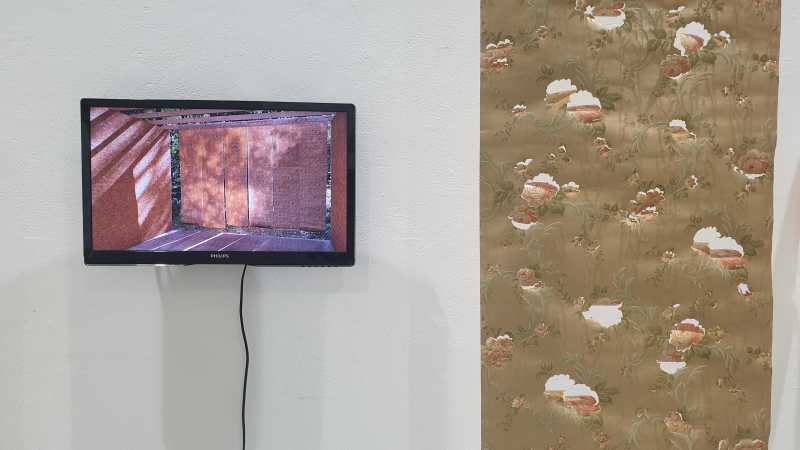


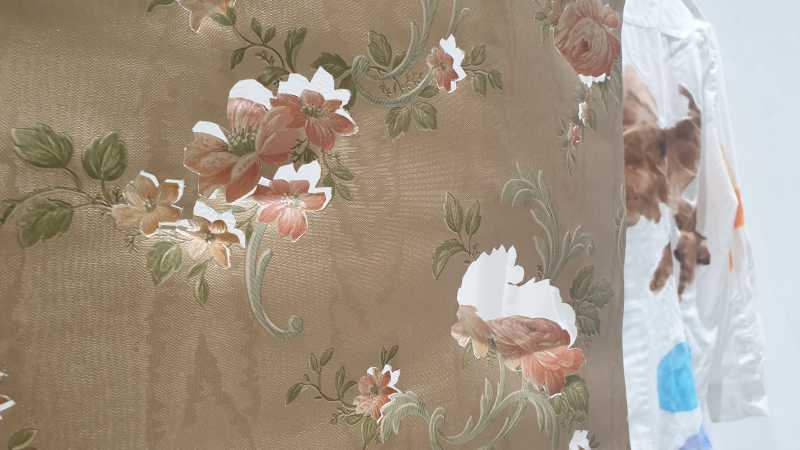
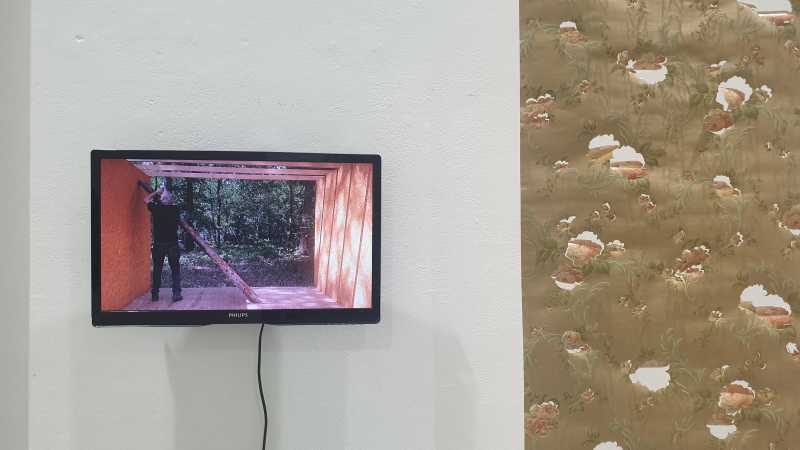
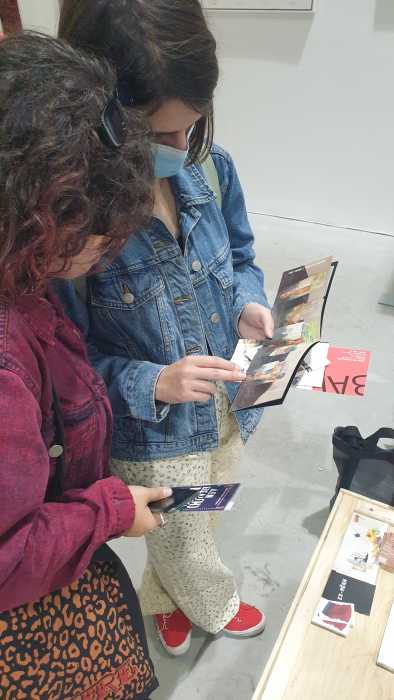
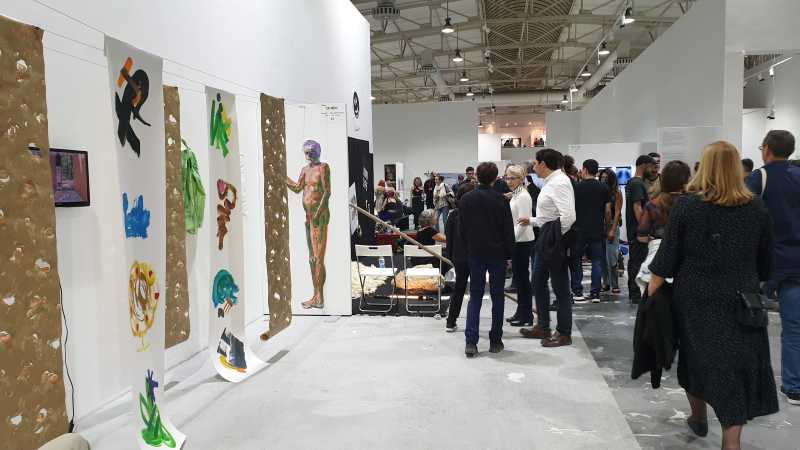
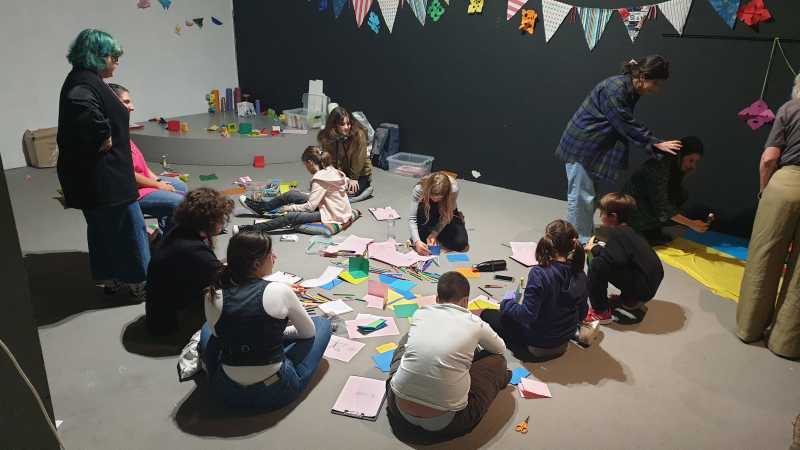
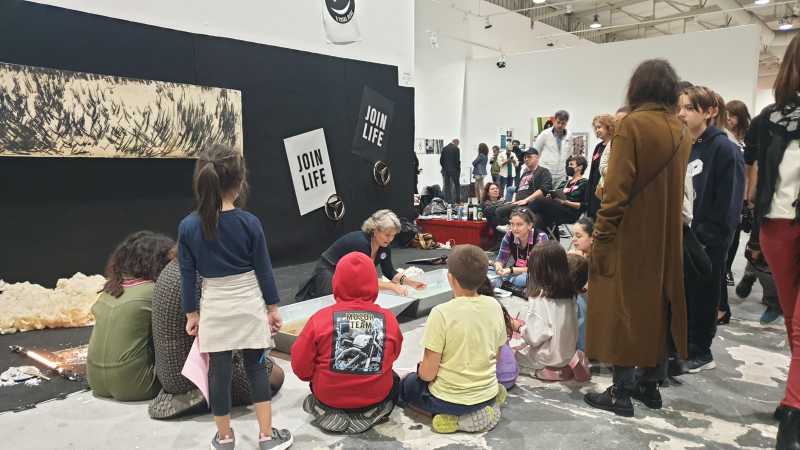
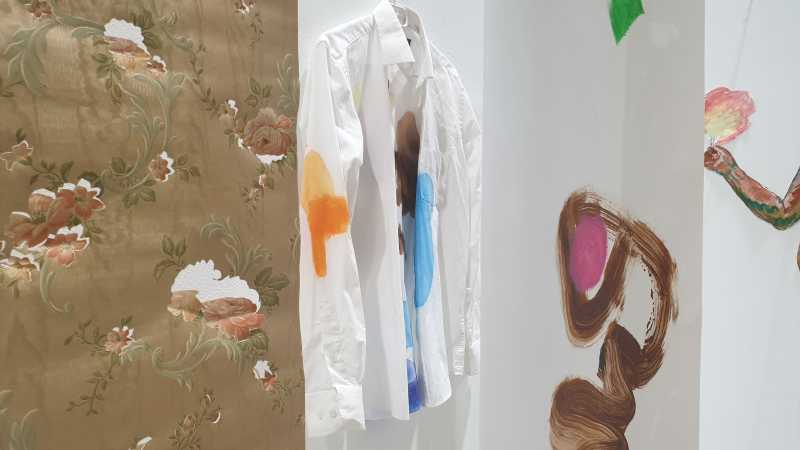
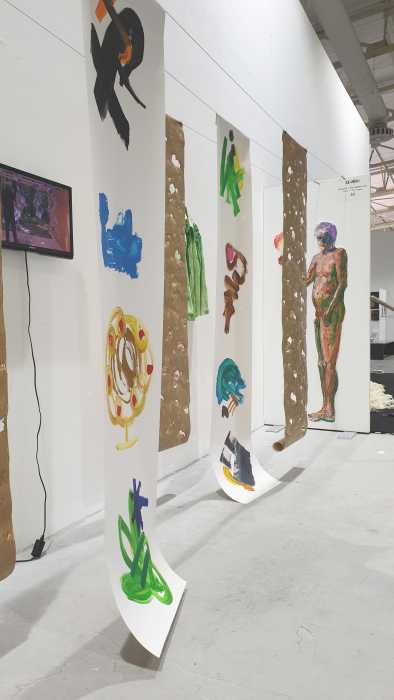
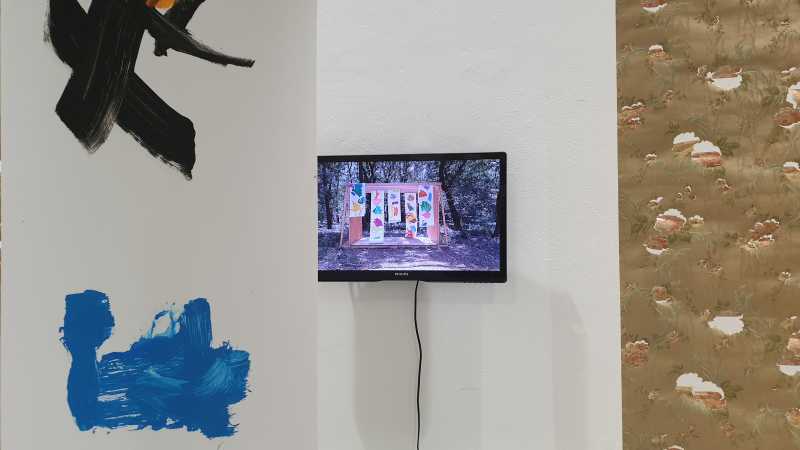
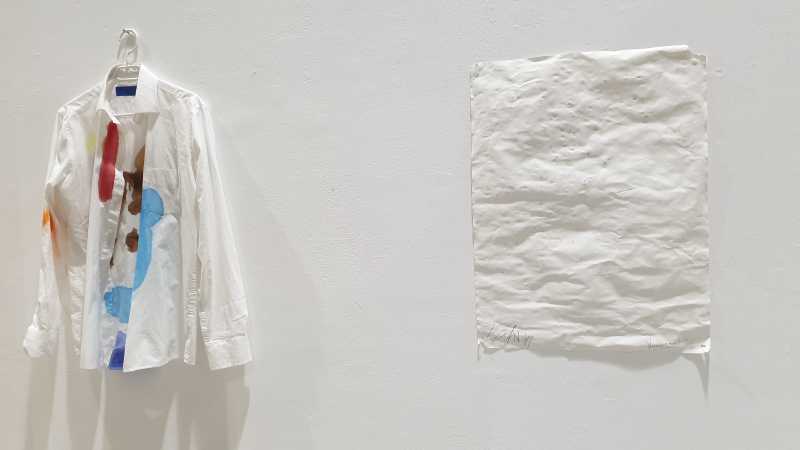
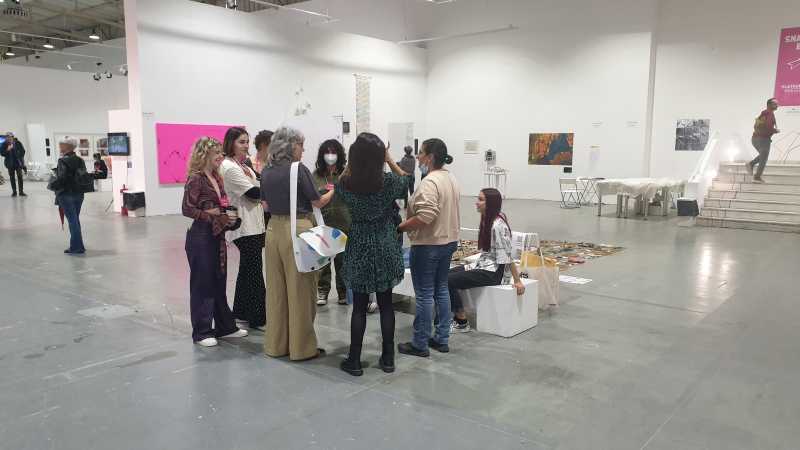
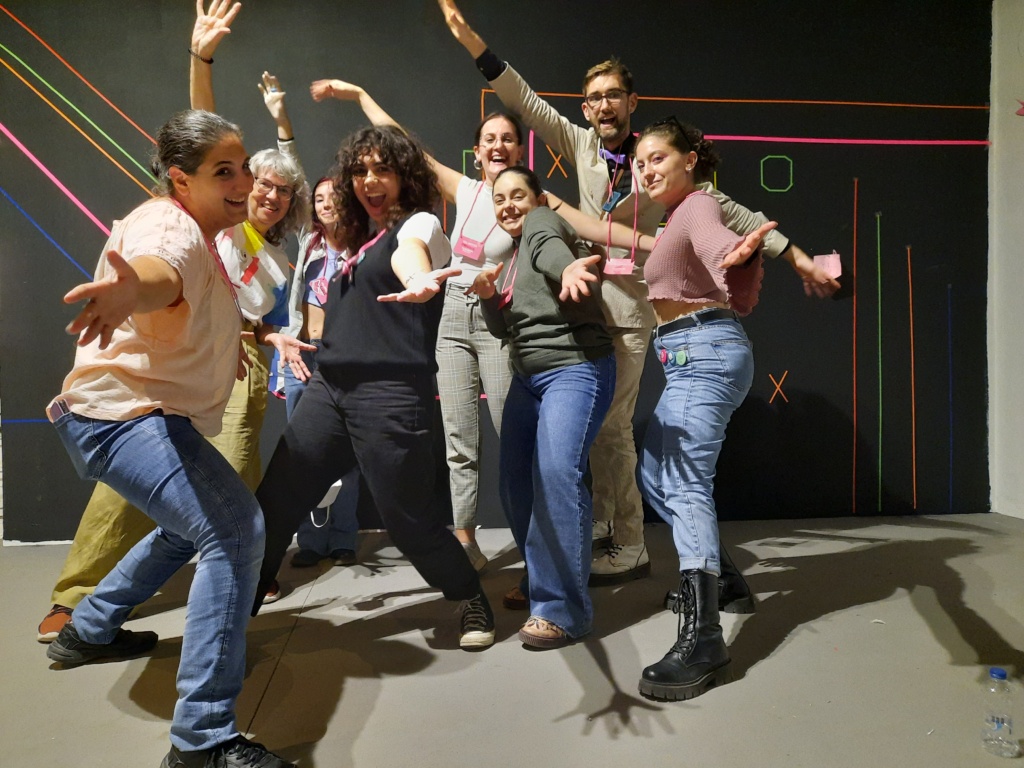
Themes for the installation
Inspired by the location of our new video we decided to show the wood, the effect of a perspective of verticals next to and behind eachother. Maarten Schepers used old wallpaper on the open back space of our “booth” in the movie, letting the sunlight and the wind work on them. The space came alive and the view on the wood that slipped through now and then is very suggestive. After partially cutting out flowers that were printed on it Maarten took the wallpaper along to Athens. The wallpaper allmost looked like a relief and the see-through effect caused by the wind in the video got a parallel in the holes that arose from the cutting.
Ellen Rodenberg painted signs on vertical roles of white paper. She used different bright colours for them. Interpretations are free, but It looked like iconographic scripture in for instance Chinese or Japanese writing. Of course this has to do with the use of the pinsel in before mentioned scripture and the use of the brush by Ellen. The term glyph, an abstract symbol, also comes to mind. It was used in the famous Black Mountain College by Anni Albers who was inspired by Maya and Andean textiles. Other artists at BMC in different disciplines would also eleborate on the term, notably Charles Olson, choreographer Katherine Litz and others culminating in a reknowned glyph-exchange. Ellen herself talks about actors, taking and leaving the stage.
As for the contribution of Kees Koomen, he says:
“I decided that I wanted to make things on the basis of re-interpretation of some of my older work. The Paintings Ira la cual manda fuoco (1998) and La figura, con paura, storna (1997) came to my mind. Theyare part of the project I did on the poem Donna me prega of the Italian renaissance-poet Guido Cavalcanti. Referring to the first painting I did a performance for the video in which I burned publications made about my visual work. This act shows the artistic practice of reconsidering your own work, burning older meanings and making it new. As to the second painting: I painted a self-portrait, naked with a burning match in my hand, turning away from the result of another performance I did for the video. On a sheet of paper I breathed out, thereby spitting some chewed-on smarties on the sheet (Janus – breathing in-breathing out). The naked figure is the artist who evaluates his work of the day before he goes to sleep. Or he thinks about his work awake in bed and goes down to the studio, in the nude as he sleeps, to see his work. He is struck by the power of what he did turning his head away in awe. This is for me a well-known effect: to be surprised later by what you did after having ended the day in the studio very unsure of it. The figure is naked which gives an extra layer, because Diogenes walked the streets of Athens, naked with a lamp in his hand to look for virtue. It is another theme from my earlier works and it is exactly what want to recognise in one’s work.”